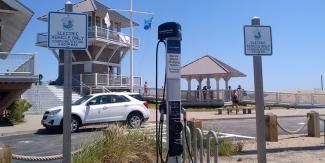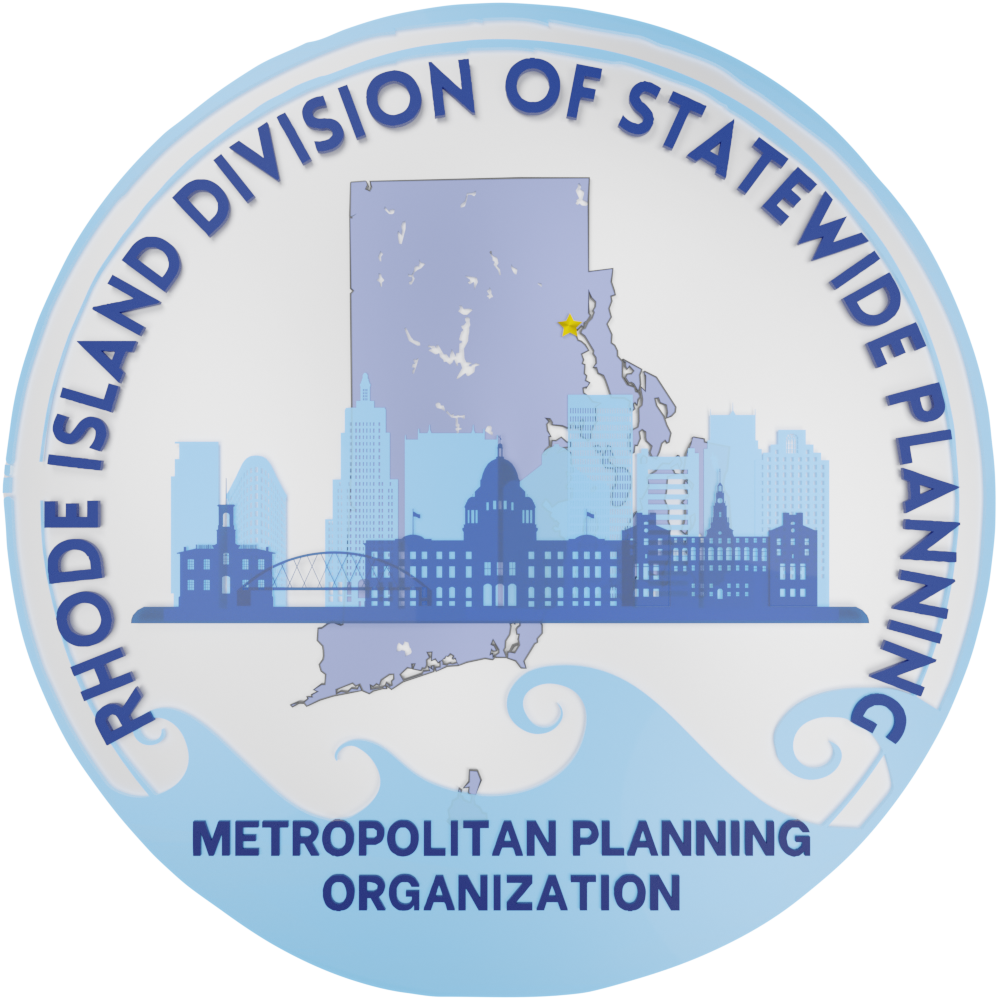Adaptation & Resilience
With the rising awareness of climate change impacts, building climate resilience has become a major focus of the Division of Statewide Planning. The key focus of climate resilience efforts is to address the vulnerabilities that communities face regarding the consequences of climate change.
With over 400 miles of coastline and large inland watersheds, Rhode Island’s infrastructure and systems are vulnerable. To date, several state agencies, municipalities, and partner institutions have worked together to identify and quantify current and future threats and have developed, or are in the process of developing, strategies to address them. According to these assessments, hundreds of miles of roads, numerous bridges, and other systemwide infrastructure are vulnerable to climate related threats.

Resilient Rhody
The Resilient Rhody Strategy, competed in 2018, responds to changing weather and environmental conditions in Rhode Island caused by climate change and proposes bold yet implementable actions to better prepare the state for these impacts. Following nine months of collaborative work, Resilient Rhody lays the groundwork for collective action, involving state agencies, municipalities, and statewide organizations to address the impacts of climate change, including on the state’s transportation infrastructure.
Rhode Island is known for its coastline and parks. While we enjoy all that Rhode Island has to offer, our state and its best attributes are increasingly at risk from the impacts of climate change. Sea levels have risen more than 10 inches since 1930 and are projected to increase by up to 9 feet by 2100, which would inundate many of Rhode Island’s tourist attractions, like our beaches and Providence’s Waterplace Park.
STORMTOOLS was developed under the direction of the CRMC and provides a series of maps that illustrate what coastal flooding could look like in the future under different sea level and storm scenarios. STORMTOOLS is accessed online through ESRI ArcGIS.com and is built upon a high resolution (6 inch vertical, 3.3 feet horizontal) digital elevation model. End users, including state and local decision makers, can enter a Rhode Island street address or zoom to an area of interest and turn on/off different storm and sea level rise scenarios in order to better understand coastal flood risk for that location. STORMTOOLS offers storm inundation layers, with and without sea level rise, for varying return period storms that covers all 420 miles of Rhode Island's coastline. Water extent and depth is included for nuisance floods (1, 3, 5, and 10 year recurrence intervals) and extra-tropical storms (25, 50, 100, and 500 year recurrence intervals) at a 95% confidence interval. Sea level rise scenarios of 1, 2, 3, 5, 7, 10 and 12 feet can be viewed on their own or combined with each storm scenario, resulting in over 40 possible sea level and storm scenario maps. Storm surge maps from historical hurricanes including 1938, 1954 (Carol), 1991 (Bob), and 2012 (Sandy) are provided as a point of reference for messaging and communication to stakeholders. STORMTOOLS is hosted online in an ArcGIS Hub format: stormtools-mainpage-crc-uri.hub.arcgis.com/
The plan must include an identification of areas that could be vulnerable to the effects of sea-level rise, flooding, storm damage, drought, or other natural hazards. Goals, policies, and implementation techniques must be identified that would help to avoid or minimize the effects that natural hazards pose to lives, infrastructure, and property.
Natural hazards and climate change impact many aspects of communities and their built environments, threatening public health, safety and welfare. The comprehensive planning process is an effective way to assess and plan for natural hazards, especially in considering the increasing risks resulting from climate change because it encompasses many of the areas likely to be impacted. Looking at natural hazards in the realm of the comprehensive plan allows communities to develop goals, policies, and implementation actions that stretch across the breadth of the topics covered within a comprehensive plan. For example, the impacts of natural hazards on the transportation network can be assessed and planned for and future land use patterns can be altered to account for particular vulnerabilities. Also, addressing natural hazards within the comprehensive planning process allows communities to evaluate the plan’s policies and implementation actions in light of the impacts of natural hazards. Many of the implementation strategies developed to support the plan’s non-hazard related goals can be adjusted to further the goal of adaptation by assessing them through a natural hazard lens. Local land use planning is an exercise of the state’s police power, which has been delegated to the municipalities through the Rhode Island General Law. It is important for communities to explain the negative impacts to health, safety, and welfare caused by natural hazards and climate change within their comprehensive plans, so that the community has a solid foundation from which policy changes can be made.
Experience shows that 40% of small businesses affected by disaster never reopen; another 25% that do reopen fail. To reduce this impact to our businesses and our communities, the Risk Reduction for Small Business Resilience in RI project developed tools to support small businesses (less than 50 employees) to better prepare for extreme weather events.
What did this project achieve?
- Identified, assessed, and addressed vulnerabilities of small businesses in Rhode Island.
- Developed Risk Reduction Guides with practical information to help small businesses become more resilient.
- Developed recommendations for municipal and state governments to support business resilience.
- Shared guides with businesses as well as Chambers of Commerce, Trade Associations, municipalities among others.
- Small Business Resiliency Executive Summary
- Small Business Resiliency Final Report

